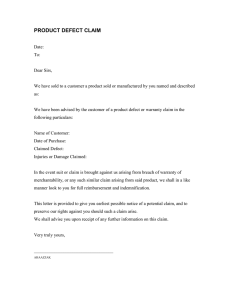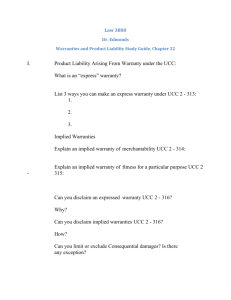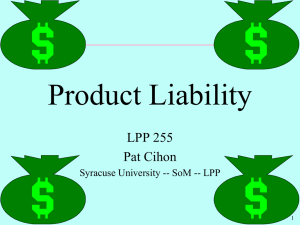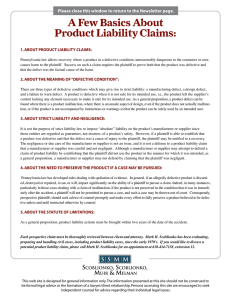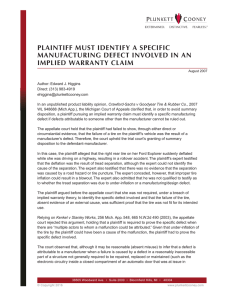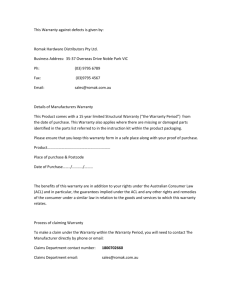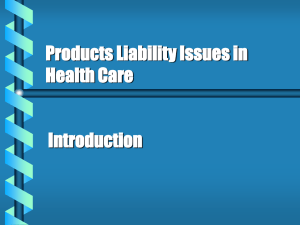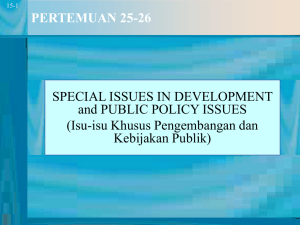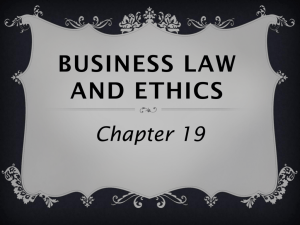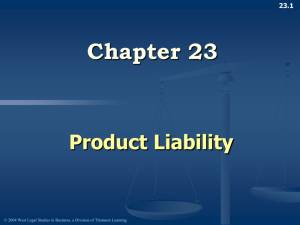Product Liability
advertisement
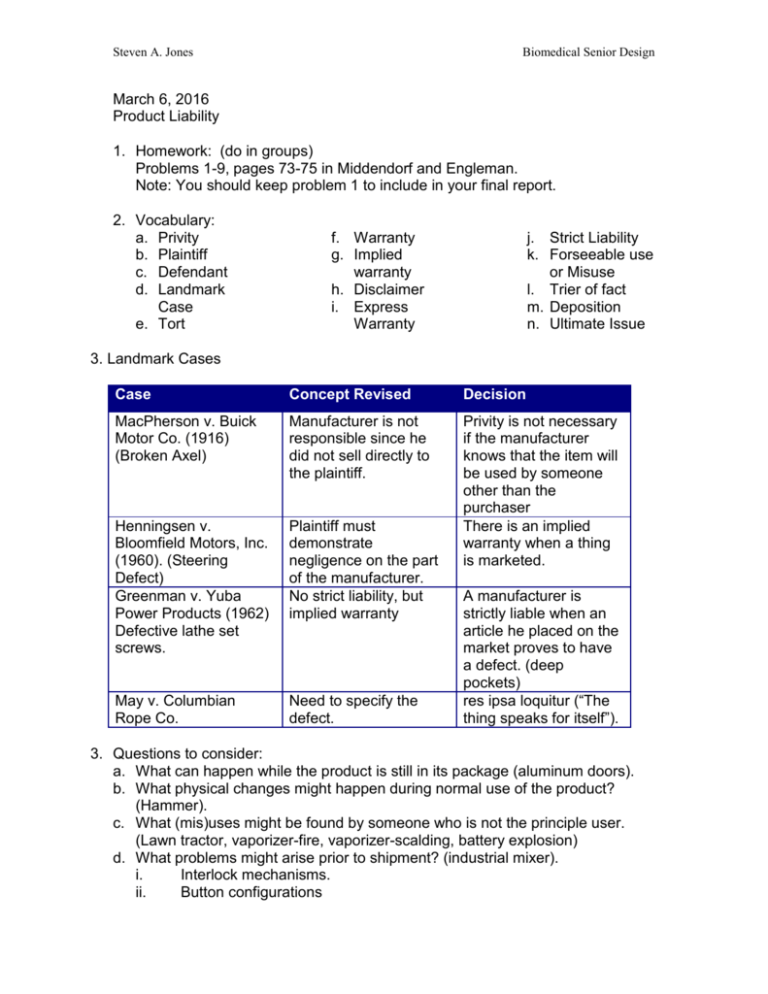
Steven A. Jones Biomedical Senior Design March 6, 2016 Product Liability 1. Homework: (do in groups) Problems 1-9, pages 73-75 in Middendorf and Engleman. Note: You should keep problem 1 to include in your final report. 2. Vocabulary: a. Privity b. Plaintiff c. Defendant d. Landmark Case e. Tort f. Warranty g. Implied warranty h. Disclaimer i. Express Warranty j. Strict Liability k. Forseeable use or Misuse l. Trier of fact m. Deposition n. Ultimate Issue 3. Landmark Cases Case Concept Revised Decision MacPherson v. Buick Motor Co. (1916) (Broken Axel) Manufacturer is not responsible since he did not sell directly to the plaintiff. Henningsen v. Bloomfield Motors, Inc. (1960). (Steering Defect) Greenman v. Yuba Power Products (1962) Defective lathe set screws. Plaintiff must demonstrate negligence on the part of the manufacturer. No strict liability, but implied warranty Privity is not necessary if the manufacturer knows that the item will be used by someone other than the purchaser There is an implied warranty when a thing is marketed. May v. Columbian Rope Co. Need to specify the defect. A manufacturer is strictly liable when an article he placed on the market proves to have a defect. (deep pockets) res ipsa loquitur (“The thing speaks for itself”). 3. Questions to consider: a. What can happen while the product is still in its package (aluminum doors). b. What physical changes might happen during normal use of the product? (Hammer). c. What (mis)uses might be found by someone who is not the principle user. (Lawn tractor, vaporizer-fire, vaporizer-scalding, battery explosion) d. What problems might arise prior to shipment? (industrial mixer). i. Interlock mechanisms. ii. Button configurations Steven A. Jones Biomedical Senior Design e. Will the ultimate user vary in dimensions and what will be the result? i. Football helmet ii. Air bags 4. Guidelines to reduce product liability risk a. Include safety as a design criterion. b. Design to nationally recognized standards. c. Use materials of sufficient quality and tolerances. d. Perform analysis to determine whether electrical, mechanical, and thermal stresses are within published limits. e. Test the device using accelerated aging tests. f. Conduct a design review with experts in distribution, installation, use, manufacturing, human dangers after discard, environmental dangers after discard. g. Make a failure and hazards analysis of the product for each stage of product life. h. Make a worst-case analysis , assuming that all tolerances will be off in the worst possible way. i. Submit the product to an independent testing laboratory. j. Keep production engineers informed of all specifications. Annotate any specific requirements. (hardness, elimination of burrs, etc.) k. Make a complete permanent record of the product history. l. Document any conflicts between risk and utility. Document design changes that could be made, but that would make the product noncompetative (economically or functionally). m. Use warning labels on the product when appropriate. n. Supply unambiguous instructions for proper installation. Test instructions on the least common denominator. o. Determine any maintenance requirements. p. Have all products inspected after manufacture. Use functional testing. q. Notify quality control supervisor of manufacturing errors. Keep manufacturing equipment in good order (tools, dies, etc.). r. Test to make sure the product is adequate even when mass produced. s. Guard against overstatements of product performance. t. Encourage sales/service personnel and dealers to report all complaints. i. Is a defect alleged? ii. If so, what is the defect? iii. How did the defect lead to the complaint? iv. What was the nature and extend of the injury or economic loss?
